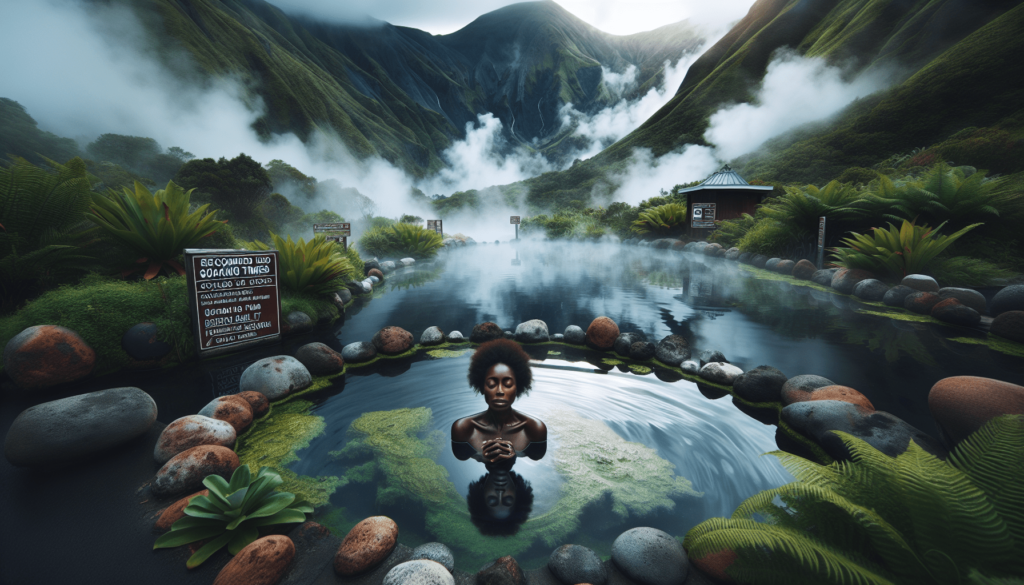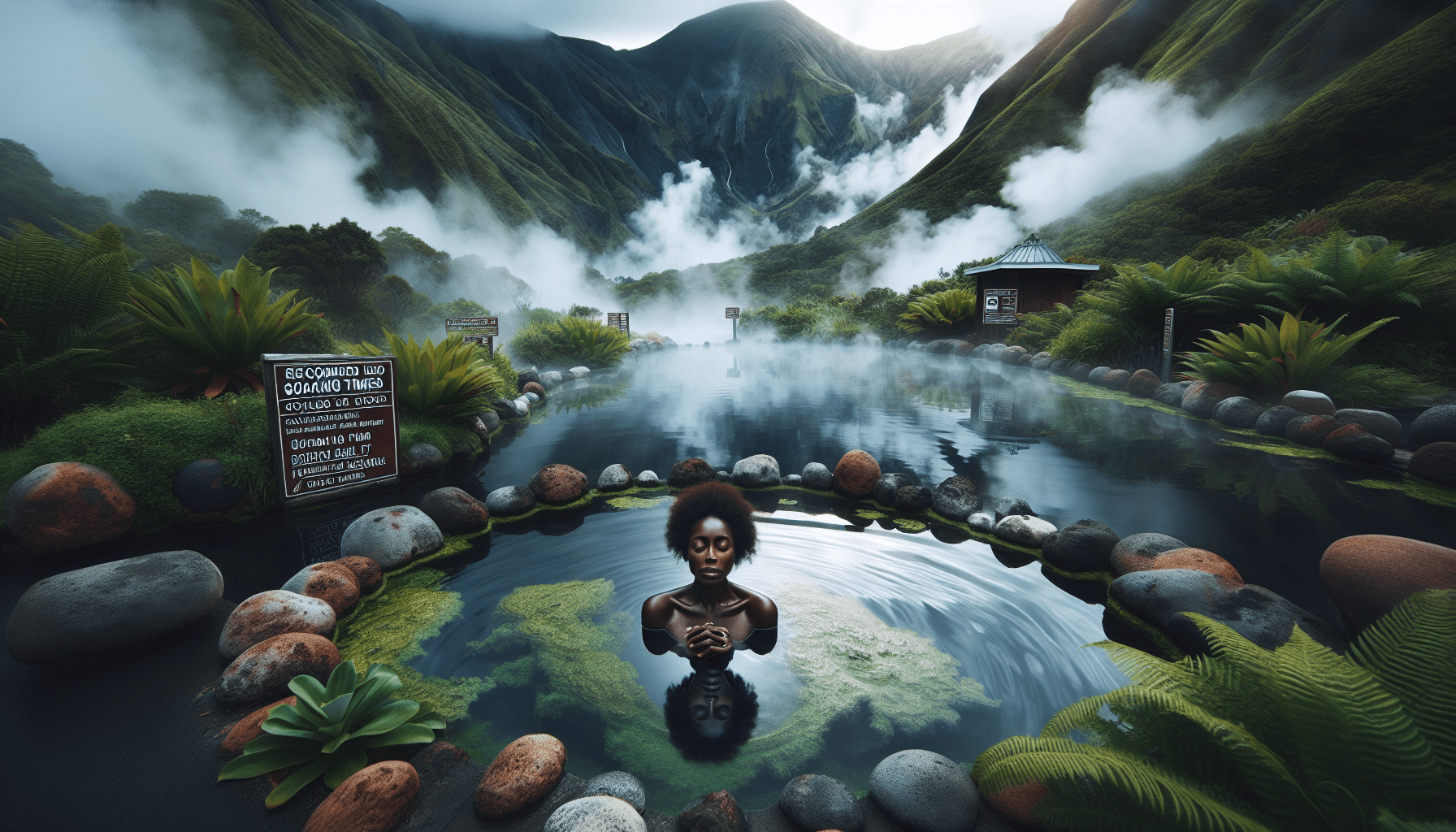Have you ever wondered if there̵7;s such a thing as soaking for too long in hot springs? Well, let’s explore the fascinating world of hot springs and discover whether an extended soak could potentially have any negative effects on your body. Hot springs have been renowned for their therapeutic qualities for centuries, offering a rejuvenating experience amidst breathtaking natural surroundings. So grab your towel and let’s find out if there’s a limit to how long you can blissfully relax in these warm and soothing waters.

Understanding Hot Springs
What are hot springs?
Hot springs are natural pools of water that are heated geothermally by the Earth’s internal heat. These pools contain water that is significantly warmer than the surrounding air temperature and provide a unique and soothing experience for those who visit them. Hot springs are found in various locations around the world and have been revered for their therapeutic properties for centuries.
How do hot springs form?
Hot springs form when groundwater seeps deep into the Earth’s crust and comes into contact with heated rocks or magma. As the water is heated, it rises back to the surface, creating pockets of hot water that we know as hot springs. The temperature of hot springs can vary greatly, ranging from mildly warm to extremely hot, depending on the geological conditions and location.
What are the benefits of hot springs?
Soaking in hot springs can offer numerous benefits to your overall well-being. The warm water and the minerals found in hot springs have been known to promote relaxation, relieve stress, and soothe muscle aches and pains. The heat can improve blood circulation and provide relief for individuals suffering from chronic pain conditions such as arthritis and fibromyalgia. Additionally, the minerals in hot springs, such as magnesium and sulfur, can nourish the skin and improve its appearance.
What are the risks of hot springs?
While hot springs can be a wonderful and therapeutic experience, it’s important to be aware of the potential risks involved. Hot springs may contain bacteria and other microorganisms that can cause infections. The high temperatures of some hot springs can lead to dehydration and overheating if precautions are not taken. Additionally, individuals with certain medical conditions, such as high blood pressure or heart problems, should consult with a healthcare professional before soaking in hot springs to ensure it is safe for them.
Soaking in Hot Springs
How long should you soak in hot springs?
The duration of your soak in hot springs depends on various factors, such as the temperature of the water, your tolerance for heat, and your overall health. As a general guideline, it is recommended to start with shorter soaking sessions of around 10-20 minutes and gradually increase the time if you feel comfortable. It’s important to listen to your body and not overexert yourself.
Factors to consider while soaking
When soaking in hot springs, there are several factors you should take into consideration. Firstly, always be aware of the water temperature and ensure it is not too hot to avoid burns or overheating. Additionally, consider the air temperature, as staying too long in hot water while the air temperature is low can lead to a rapid drop in body temperature once you get out of the water. It is also important to be mindful of any existing medical conditions or medications you are taking that may affect your ability to tolerate heat.
Effects of prolonged soaking in hot springs
While soaking in hot springs can be beneficial, prolonged exposure to hot water can have adverse effects on your body. Extended periods of soaking can lead to dehydration, as the warm water causes your body to sweat, resulting in fluid loss. Prolonged exposure can also lead to skin irritation and allergic reactions, especially if the water contains high levels of minerals or chemicals. Additionally, spending excessive time in hot springs may impact your blood pressure and heart rate, particularly if you have existing cardiovascular issues.
Health Risks of Soaking Too Long
Overheating and dehydration
One of the major health risks of soaking too long in hot springs is the potential for overheating and dehydration. The hot water can cause excessive sweating, leading to fluid loss from your body. Dehydration can result in symptoms such as dizziness, fatigue, and decreased cognitive function. It is vital to stay hydrated by drinking plenty of water before, during, and after your soak to replenish lost fluids and prevent overheating.
Skin irritation and allergic reactions
Prolonged soaking in hot springs can also increase the risk of skin irritation and allergic reactions. The minerals and chemicals present in hot springs can cause dryness, itching, and rashes for individuals with sensitive skin. If you have a history of skin allergies or sensitivities, it is important to be cautious and consider using a barrier, such as a towel or bathing suit, between your skin and the water to minimize contact.
Infections and illnesses
Hot springs may contain bacteria and other microorganisms that can cause infections if proper hygiene measures are not followed. It is crucial to ensure that you do not swallow the water, as ingestion of contaminated water can lead to gastrointestinal issues. Additionally, skin infections and respiratory illnesses can occur if the water is contaminated or if you have an open wound that comes into contact with the water. Showering before and after your soak, and avoiding immersing your head underwater, can reduce the risk of infections and illnesses.
Impact on blood pressure and heart rate
Hot springs can have an impact on your blood pressure and heart rate, particularly if you have pre-existing cardiovascular conditions. The heat from the water can cause blood vessels to dilate, leading to a drop in blood pressure. This can be beneficial for individuals with high blood pressure but may pose risks for those with low blood pressure or heart problems. It is essential to consult with a healthcare professional before soaking in hot springs if you have any cardiovascular concerns.
Precautions and Safety Measures
Know your limits
When it comes to soaking in hot springs, it is important to know your limits and listen to your body. If you start feeling lightheaded, fatigued, or uncomfortable, it may be a sign that you have been in the water for too long or that the temperature is too hot for you. Take breaks, step out of the water if needed, and rest to give your body a chance to recover.
Stay hydrated
To prevent dehydration, make sure to drink plenty of water before, during, and after your soak. Bring a water bottle with you and take small sips regularly to maintain hydration levels. Be mindful of alcohol consumption, as it can further contribute to dehydration, and avoid caffeine and sugary beverages as they can have diuretic effects.
Protect your skin
If you have sensitive skin or are prone to allergies, consider using a towel or wearing a bathing suit to protect your skin from direct contact with the water. After your soak, rinse off any residual minerals or chemicals from your skin and apply moisturizer to keep your skin hydrated.
Monitor water temperature
Always be aware of the water temperature before entering a hot spring. Test the water using your hand or a thermometer to ensure it is not too hot. Remember, what may feel comfortable at first can quickly become too hot after an extended soak. If the water feels uncomfortably hot, it is important to step out and allow it to cool down before re-entering.
Take breaks and rest
To prevent overheating, take periodic breaks from soaking and allow your body to cool down. Step out of the water, sit in the shade, or take a short walk to help regulate your body temperature. Use this time to hydrate and relax before returning to the hot springs.

Special Considerations
Pregnant women
Pregnant women should exercise caution when soaking in hot springs. The high water temperature can potentially raise the core body temperature, which may pose risks to the developing fetus. It is advisable to consult with a healthcare professional before soaking in hot springs during pregnancy to ensure it is safe for both the mother and the baby.
Infants, toddlers, and young children
Children have more difficulty regulating their body temperature compared to adults, making them more susceptible to overheating. It is important to closely monitor their time in hot springs, limit their exposure, and ensure the water temperature is suitable for their age. Consult with a pediatrician before bringing infants, toddlers, or young children to hot springs.
Elderly individuals
Elderly individuals may have underlying health conditions or medications that can affect their ability to tolerate heat. It is crucial for them to take extra precautions and listen to their bodies. They should consider shorter soaking sessions and ensure proper hydration to prevent overheating and dehydration.
People with certain medical conditions
Individuals with certain medical conditions, such as diabetes, cardiovascular issues, or circulatory disorders, should be cautious when soaking in hot springs. The heat can affect blood pressure and circulation, potentially exacerbating these conditions. Prior consultation with a healthcare professional is advised to assess the suitability and safety of hot springs for those with medical conditions.
Recommended Soaking Time
General guidelines
As a general guideline, it is recommended to start with shorter soaking sessions of around 10-20 minutes and gradually increase the time as tolerated. However, everyone’s tolerance for heat and ability to handle prolonged soaking differs, so be sure to listen to your body and adjust accordingly.
Consulting with a healthcare professional
If you are unsure about the appropriate soaking time for your specific situation, it is always best to consult with a healthcare professional. They can take into account your individual health history, medications, and any existing conditions to provide personalized recommendations and ensure your safety.
Alternatives to Prolonged Soaking
Rotating between hot and cold water
To avoid spending excessive time in hot water, you can alternate between hot and cold water soaks. This contrast therapy can provide similar therapeutic benefits while reducing the risk of overheating and dehydration. Spend a few minutes in the hot spring, then switch to a cooler pool or take a cold shower before returning to the hot springs.
Periodic breaks and relaxation
Instead of soaking continuously, take periodic breaks to give your body a chance to cool down and rest. Find a shaded area or sit in a comfortable lounge chair to relax and enjoy the surroundings. Use this time to sip water, apply sunscreen, or engage in light stretching exercises to further enhance relaxation.
Enjoying other activities in hot spring areas
Hot spring areas often offer a range of activities and amenities besides soaking. Take advantage of hiking trails, picnic areas, or spa services to diversify your experience. Engaging in different activities can provide a break from the hot water and make your visit to the hot springs more enjoyable.
Conclusion
Hot springs offer a unique and therapeutic experience, but it is important to understand the potential risks and precautions associated with soaking in them. By knowing your limits, staying hydrated, protecting your skin, and monitoring water temperature, you can enjoy the benefits of hot springs safely. It is always advisable to consult with a healthcare professional, especially if you have underlying health conditions or concerns. Soak in moderation, take breaks, and listen to your body to ensure a pleasant and rejuvenating hot springs experience.
